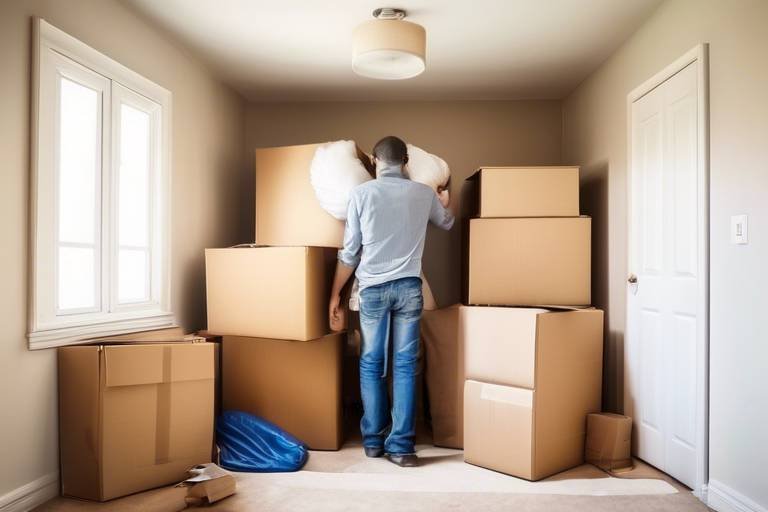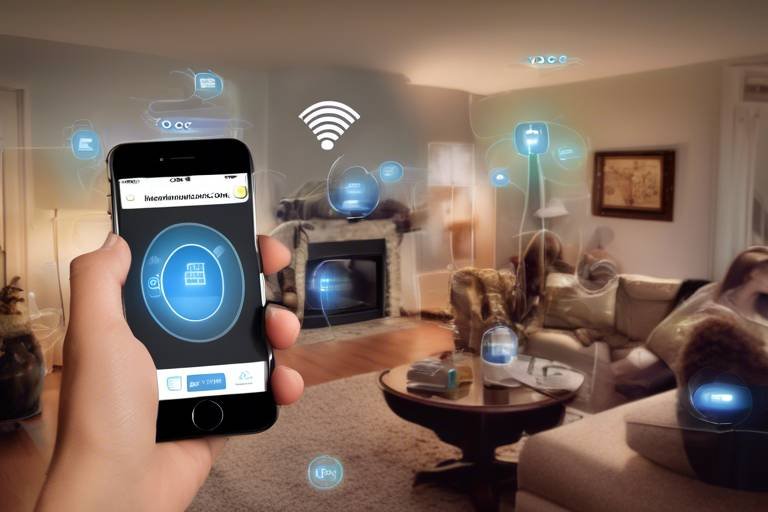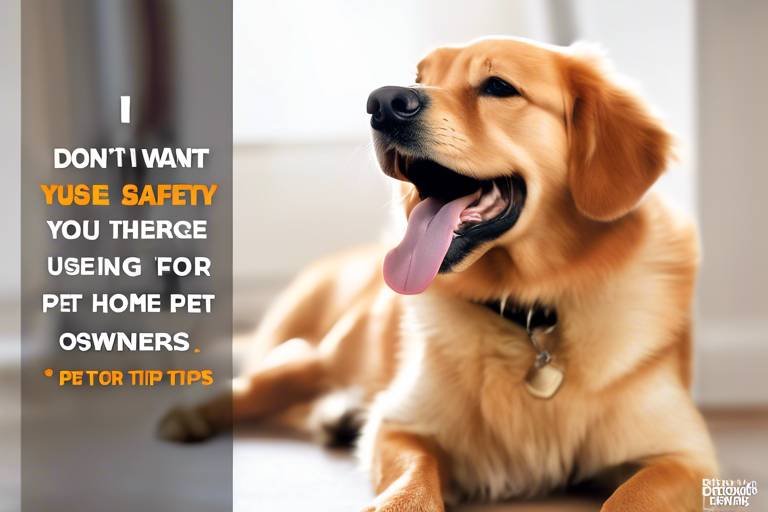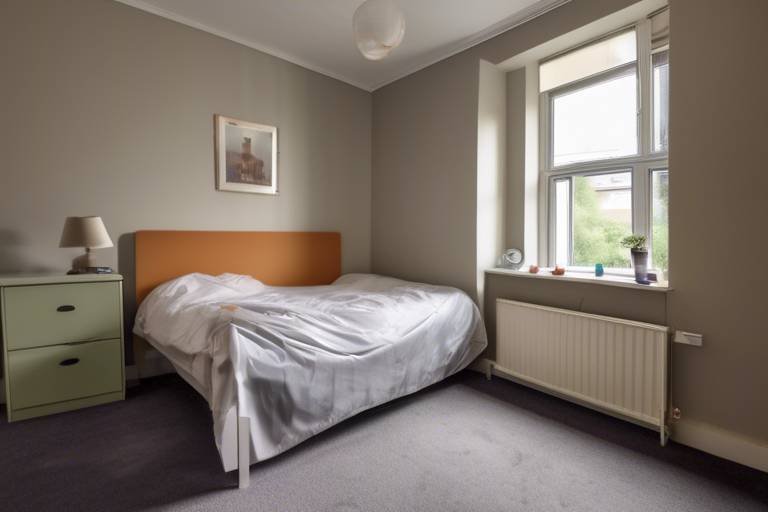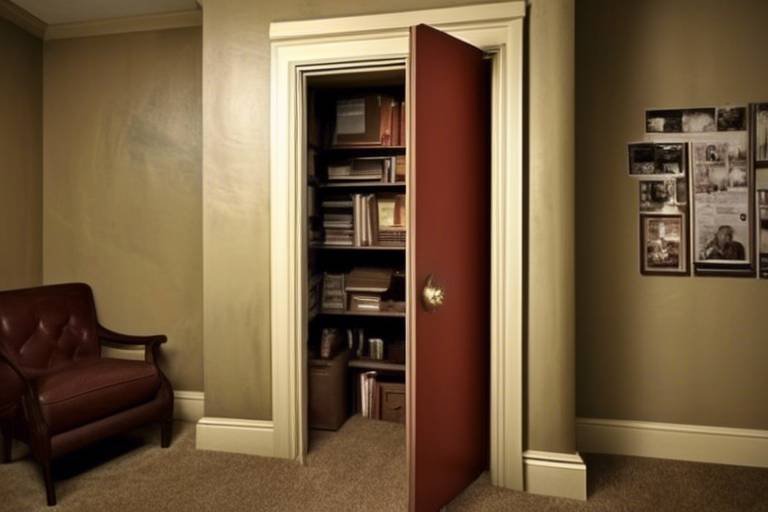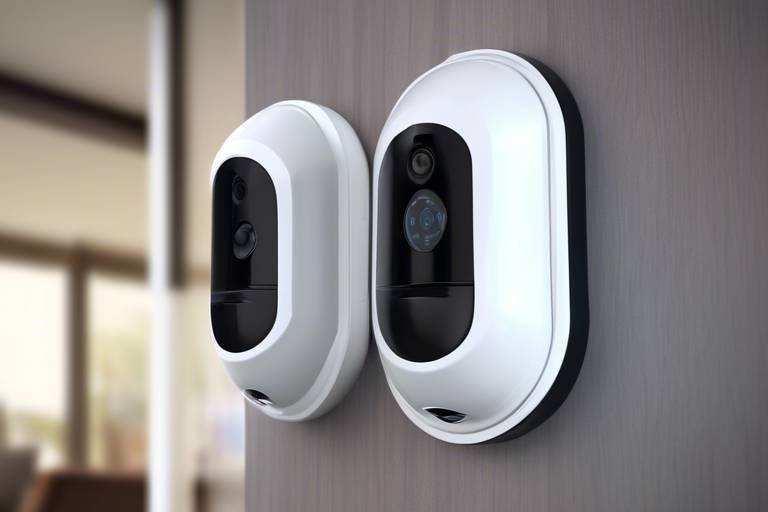Ensuring Home Safety When You Have Kids
As a parent, ensuring the safety of your children at home can feel like a daunting task. With their boundless energy and curiosity, kids have a knack for finding trouble in the most unexpected places. It's not just about keeping them out of harm's way; it's about creating a nurturing environment where they can explore and grow without unnecessary risks. In this article, we’ll delve into essential tips and strategies for crafting a safe home that caters to your little adventurers.
Identifying potential dangers in the home is crucial for ensuring child safety. Common household hazards can range from sharp objects and choking risks to toxic substances lurking in cabinets. Think about it: how often do we overlook the everyday items that can pose a threat? For instance, kitchen knives, scissors, and even small batteries can be harmful if not stored properly. By understanding these risks, parents can take proactive steps to mitigate them.
Childproofing involves taking specific steps to minimize risks. This isn’t just about slapping on a few safety locks; it’s about a comprehensive approach to securing your home. Consider using safety gates to block off stairways and rooms that might pose a danger. Additionally, securing heavy furniture to the wall can prevent tipping accidents. Every little adjustment counts, and it’s amazing how a few simple changes can make a world of difference in keeping your little ones safe.
Proper storage of household items can prevent accidents. It’s essential to think about where you keep your cleaning supplies, medications, and small objects that children might find interesting or dangerous. For example, storing toxic substances in high cabinets, out of reach, is a must. You might even consider investing in child-proof containers for items that need to be accessible but still require a layer of safety. Remember, a clutter-free home is not only visually appealing but also safer for your kids.
Designating safe play areas in your home can help keep children secure. Whether it’s a cozy corner in the living room or a dedicated playroom, having a specific space for play can limit risks. Choose areas with soft flooring and remove any breakable items. And let’s not forget supervision! No matter how safe a space is, keeping an eye on your little ones during playtime is crucial. It’s like being a lifeguard at a pool—you want to enjoy the fun but also be ready to jump in if needed.
Being prepared for emergencies is vital for family safety. This means having a plan in place for various scenarios, whether it’s a fire, natural disaster, or medical emergency. Create a family emergency plan that includes escape routes, emergency contacts, and safety procedures. Additionally, having a well-stocked first aid kit can be a lifesaver. Make it a family project to discuss these plans so that everyone knows what to do when the unexpected occurs.
Teaching children about safety from a young age fosters awareness. It’s not just about telling them “no” or “don’t touch”; it’s about engaging them in conversations about why certain things are dangerous. Use age-appropriate safety lessons to instill good habits. For example, you can turn learning about fire safety into a fun game. This way, children not only understand the rules but also feel empowered to make safe choices.
Outdoor areas present unique safety challenges. Whether it’s your backyard or a local park, ensuring that children are safe while enjoying nature is paramount. Secure your yard with fences, and make sure that any outdoor equipment is age-appropriate and in good condition. Additionally, teaching children about road safety and stranger danger when playing outside can help keep them secure. After all, the world is a big place, and it’s essential that they navigate it wisely.
Utilizing technology can enhance home safety. Smart home devices, security systems, and safety apps can help parents monitor their children's safety and manage household risks. Imagine being able to check in on your kids while you’re in another room or even away from home! With the right technology, you can have peace of mind knowing that you’re always connected to your little ones.
Conducting regular safety audits helps maintain a secure environment. It’s easy to become complacent, but periodic checks around the home can identify and address emerging safety concerns. Make it a habit to look for new hazards, especially as your child grows and their curiosity expands. This proactive approach can help you stay one step ahead and ensure that your home remains a safe haven.
- What are the most common household hazards for children?
Common hazards include sharp objects, choking risks, and toxic substances. - How can I childproof my home effectively?
Use safety gates, secure heavy furniture, and store hazardous items out of reach. - What should I include in a family emergency plan?
Your plan should include escape routes, emergency contacts, and safety procedures. - How do I educate my children about safety?
Engage them in conversations and turn lessons into fun activities.
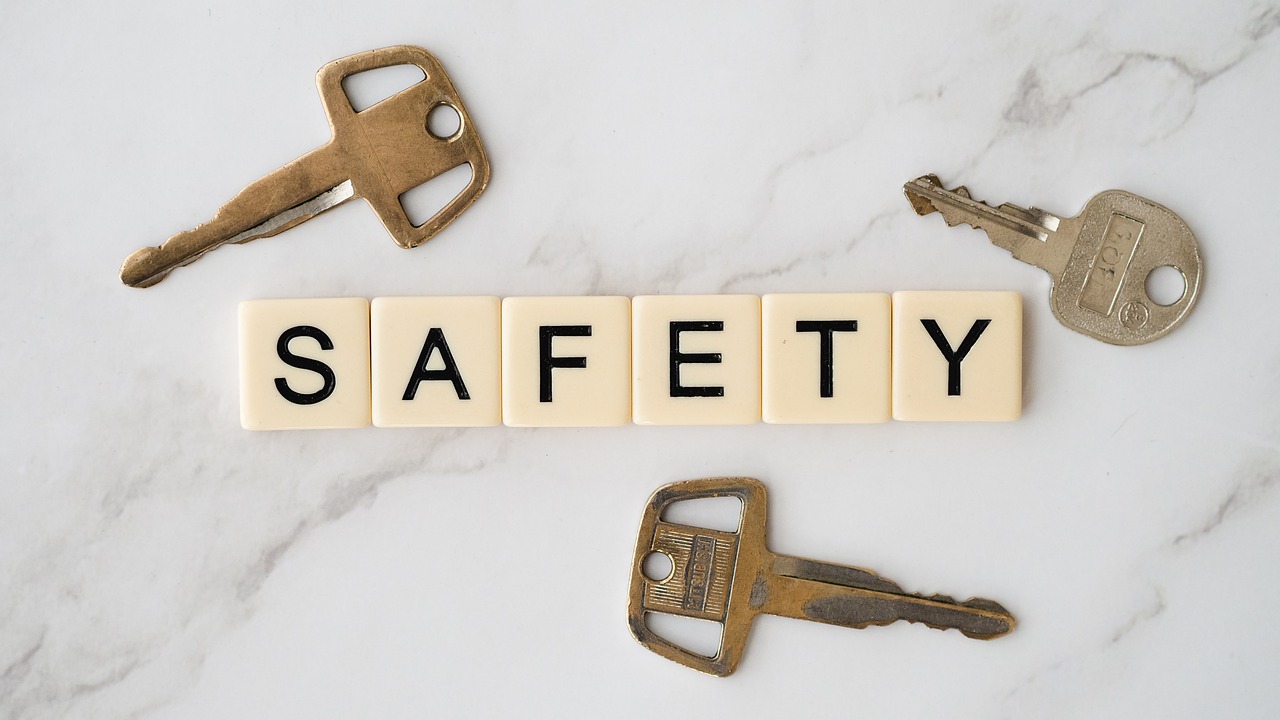
Understanding Common Household Hazards
This article explores essential tips and strategies for creating a safe home environment for children, addressing common hazards, and implementing preventive measures to ensure peace of mind for parents.
As a parent, your primary instinct is to protect your child from harm. However, many household items we consider safe can actually pose significant risks to our little ones. Understanding these common hazards is the first step in creating a secure environment. For instance, sharp objects like knives, scissors, and even certain toys can cause injuries if not stored properly. Just imagine a curious toddler reaching for a shiny knife on the kitchen counter—yikes!
Another critical area of concern is choking hazards. Small items such as coins, buttons, or even pieces of food can easily become a choking threat for young children. It's astonishing how quickly a child can find and put something in their mouth without you even noticing! Therefore, keeping small objects out of reach is essential. Consider conducting a thorough inspection of your home, focusing on areas like the living room and playroom, where these tiny treasures might lurk.
Toxic substances are another hidden danger lurking in our homes. Cleaning supplies, medications, and even certain plants can be harmful if ingested. It’s vital to store these products in high cabinets or locked areas, out of sight and reach of curious hands. Here's a quick table to illustrate some common household items that can be hazardous:
| Hazardous Items | Potential Risks |
|---|---|
| Sharp Objects | Injury or cuts |
| Small Toys | Choking hazard |
| Cleansers | Toxic if ingested |
| Medications | Overdose or poisoning |
| Cords and Wires | Strangulation risk |
Additionally, cords and wires from electronics can present strangulation risks, especially for infants and toddlers who are just learning to crawl or walk. It might seem harmless, but a stray cord can quickly become a dangerous plaything. Therefore, securing these cords with clips or hiding them behind furniture can significantly reduce the risk.
In summary, being aware of these common household hazards is crucial for ensuring your child's safety. By identifying potential dangers and taking proactive measures, you can create a safer home environment. Remember, safety is not a one-time task but an ongoing commitment. So, keep your eyes peeled and your home secure!
- What are the most common household hazards for children? Sharp objects, choking hazards, toxic substances, and cords/wires are among the most common dangers.
- How can I childproof my home effectively? Use safety gates, secure furniture, and store hazardous items out of reach.
- When should I start childproofing my home? It's best to start childproofing as soon as your baby begins to crawl.
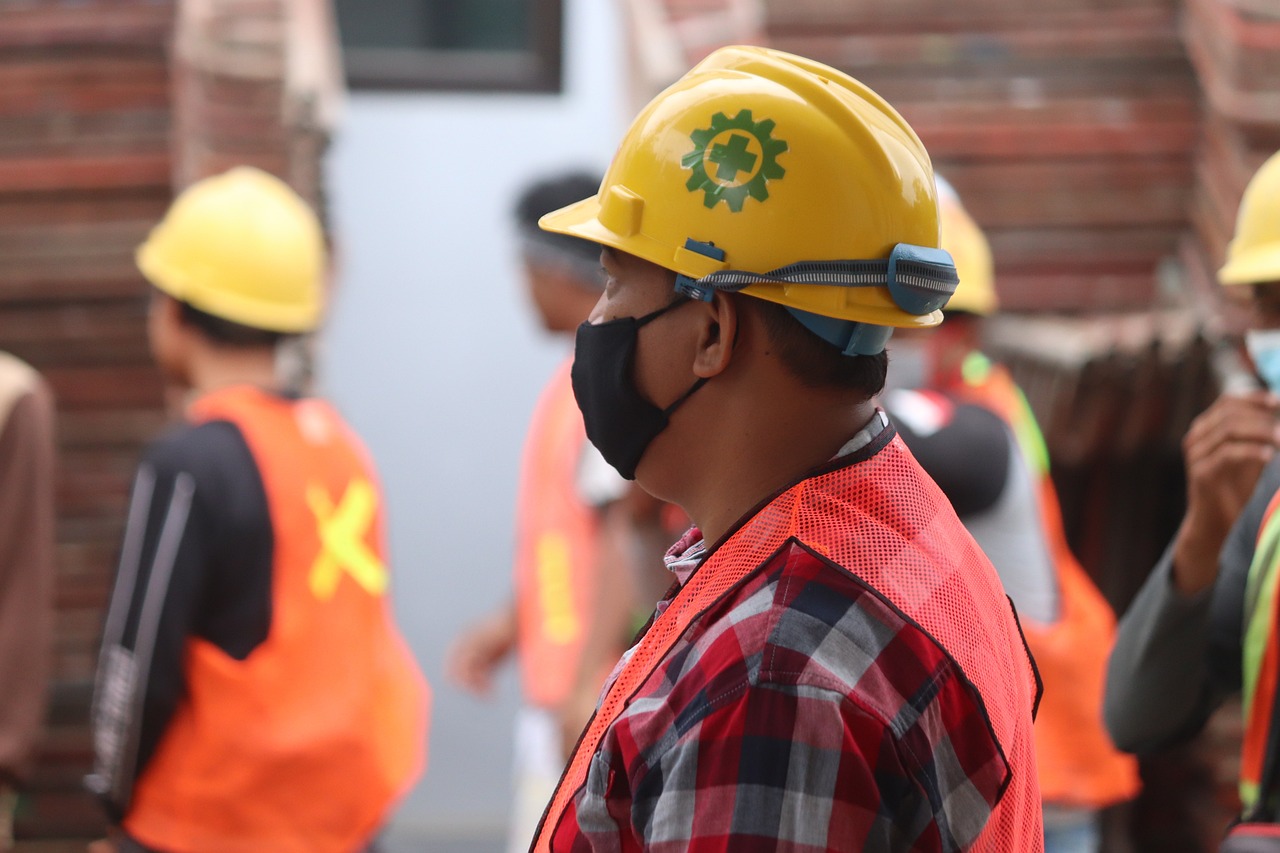
Childproofing Your Home
Childproofing your home is one of the most important steps you can take to ensure your little ones are safe as they explore their environment. Think of your home as a playground, but with hidden dangers lurking around every corner. From sharp edges on furniture to the enticing allure of cleaning supplies, every room can pose risks if not properly secured. So, how do you transform your home into a safe haven for your curious children? Let’s dive into some practical strategies that will not only protect your kids but also provide you with peace of mind.
First and foremost, securing furniture is crucial. Did you know that heavy furniture, such as bookshelves and dressers, can easily tip over if climbed on? To prevent this, use anti-tip straps to anchor these items to the wall. This simple step can make a world of difference. Additionally, consider placing larger items against the wall and keeping smaller, lighter items lower to the ground. This way, even if your child does decide to climb, they won’t be able to reach the more dangerous items.
Next, let’s talk about safety gates. If you have stairs in your home, installing safety gates at the top and bottom is a must. These gates act as a barrier, preventing your little explorers from tumbling down the stairs. When choosing a gate, look for one that meets safety standards and can be easily operated by adults but is challenging for kids. Remember, a gate is only effective if it’s used consistently, so make it a habit to close the gate after passing through.
Locks and latches are another essential part of childproofing. These devices can keep children out of cabinets and drawers that contain hazardous materials. For example, kitchen cabinets often house sharp utensils and cleaning products that can be dangerous if accessed by little hands. Installing childproof locks on these cabinets can significantly reduce the risk of accidents. Don’t forget to check your bathroom as well; medications and toiletries should be stored out of reach or in locked cabinets.
Furthermore, it’s important to consider the type of furniture you have. Sharp corners can be a hazard for toddlers who are just learning to walk or run. To mitigate this risk, you can purchase corner guards or bumpers that cushion these edges. They’re easy to install and can prevent painful bumps and bruises. Think of them as little safety cushions for your furniture!
In addition to these measures, creating a safe environment also involves being mindful of the smaller items in your home. Toys with small parts can pose choking hazards, so ensure that any toys your child plays with are age-appropriate. Regularly check your child's toy box and remove any broken toys or items that could be dangerous. It’s like doing a little treasure hunt, but instead of finding gold, you’re ensuring safety!
Lastly, don’t underestimate the power of communication. As your children grow, they will become more curious and mobile. It’s essential to explain to them the dangers present in your home. Teaching them about safety in an age-appropriate way can empower them to make safer choices. For instance, you might say, “That drawer has things in it that can hurt you, so let’s keep it closed.” This not only keeps them safe but helps them understand the reasons behind your rules.
In summary, childproofing your home is an ongoing process that requires vigilance and creativity. By taking these steps, you can significantly reduce the risks and create a safer environment for your children to grow and explore. Remember, a little prevention goes a long way in ensuring that your home is a sanctuary for your family!
- What are the most common hazards in a home?
Common hazards include sharp objects, choking hazards from small toys, and toxic substances such as cleaning supplies. - How can I secure my furniture?
Use anti-tip straps to anchor heavy furniture to the wall and keep lighter items lower to minimize climbing risks. - Are safety gates necessary?
Yes, safety gates are essential for preventing falls down stairs and keeping children out of unsafe areas. - What should I do about small toys?
Regularly check toys for small parts and ensure they are age-appropriate to prevent choking hazards.

Safe Storage Solutions
When it comes to keeping your little ones safe at home, proper storage of household items is absolutely essential. Children are naturally curious, and their inquisitive nature can lead them to explore areas that may contain dangerous items. From cleaning supplies to small toys, ensuring that everything is stored safely can significantly reduce the risk of accidents. So, how can you achieve this? Let’s dive into some effective strategies that will help you create a safer environment for your children.
First off, consider the importance of high storage. Items such as medications, cleaning products, and sharp tools should be stored out of reach, preferably in cabinets that are at least five feet off the ground. If you don’t have high cabinets, use locking cabinets or bins that can be secured. This simple step can prevent curious hands from accessing potentially harmful substances. You might be surprised to learn that over 60,000 children visit the emergency room each year due to accidental poisoning, which emphasizes the need for secure storage solutions.
Another effective strategy is to use childproof locks and latches on cabinets and drawers. These locks are designed to be intuitive for adults but challenging for children. Make it a habit to secure cabinets after use, ensuring that nothing dangerous is left within reach. Additionally, consider using drawer dividers to keep items organized and less cluttered. A tidy space is not only visually appealing but also makes it easier to keep track of what’s stored where.
Moreover, it’s crucial to think about the storage of small objects. Items like coins, batteries, and small toys can pose choking hazards. Store these items in high places or use containers with secure lids. If your child has a knack for finding these hidden treasures, consider using a locking toy chest for larger toys that may contain small parts. This not only keeps dangerous items out of reach but also teaches children the importance of putting away their toys when they’re done playing.
For cleaning supplies, consider investing in child-resistant packaging. Many manufacturers now offer products with safety caps that require a specific action to open. This can add an extra layer of security, but remember that it’s not foolproof. Always store these products in locked cabinets or high shelves. You can also create a designated cleaning supply area that is off-limits to children, making it clear that these items are not toys.
In addition, utilize clear storage bins for organization. Not only do these bins help keep your items sorted, but they also allow you to see what’s inside without opening them. This can be particularly useful for toys or craft supplies. Labeling each bin can also help older children understand where things belong, creating a sense of responsibility and order.
Lastly, don’t forget to regularly review your storage solutions. As your child grows, their ability to reach and access items will change. Conducting periodic checks will help you stay ahead of potential hazards. It’s all about staying proactive rather than reactive. Remember, a safe home is a happy home!
Q: What are the most common household items that pose a risk to children?
A: Common items include cleaning supplies, medications, sharp objects, and small toys. Always ensure these items are stored out of reach or secured.
Q: How can I teach my children about safe storage?
A: Start by explaining the importance of not touching certain items and involve them in the organization process, so they understand where things should go.
Q: Are there specific products I should consider for childproofing my home?
A: Yes, look for childproof locks, drawer latches, and child-resistant packaging for cleaning supplies and medications.
Q: How often should I reassess my storage solutions?
A: It’s a good idea to reassess your storage solutions every few months or whenever your child reaches a new developmental stage.
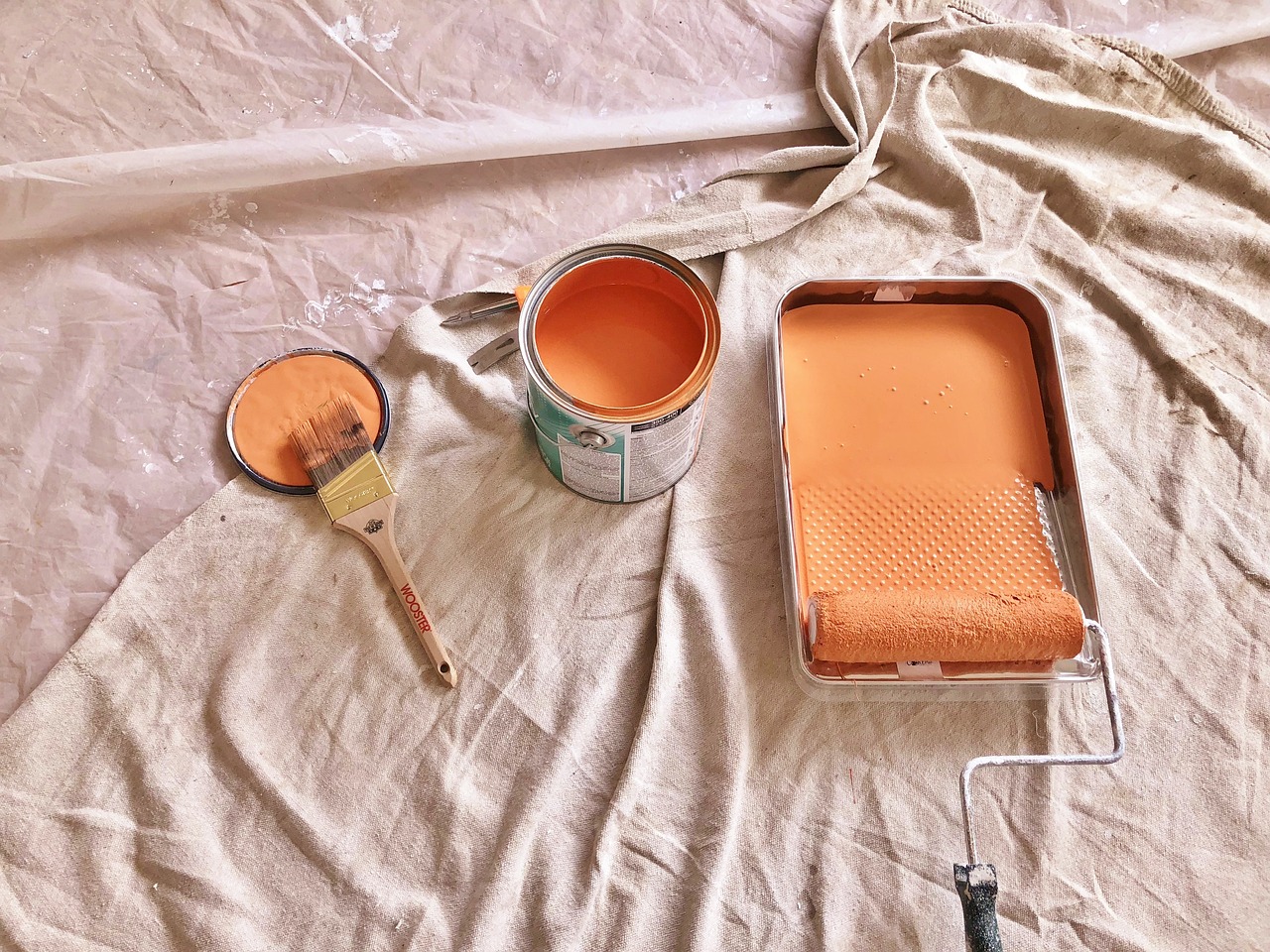
Creating Safe Play Areas
Creating safe play areas in your home is essential for ensuring that your little explorers can enjoy their adventures without unnecessary risks. Think of it as crafting a mini sanctuary where their imaginations can run wild while you can breathe easy knowing they’re safe. First things first, you’ll want to designate specific areas for play. This could be a cozy corner in the living room, a dedicated playroom, or even a section of the backyard. The key is to ensure that these spaces are free from potential hazards that could lead to accidents.
When setting up these play zones, consider the types of activities your children enjoy. For instance, if they love building forts or playing with blocks, make sure the area is spacious enough to accommodate their creations without any sharp edges or hard surfaces that could cause injuries. Additionally, using soft mats or rugs can provide a cushioned surface for those inevitable tumbles. Just like a safety net for a trapeze artist, these mats can soften the blow when kids get a bit too adventurous!
Another crucial aspect is supervision. While it’s tempting to let them play independently, keeping an eye on them ensures that you can step in if they get a little too rowdy or head towards a risky area. You might think of supervision as a lifeguard at a pool; they’re there not just to watch, but to jump in when things get a bit too splashy. Consider setting up your play areas in locations where you can easily monitor your kids while you tackle other tasks around the house.
Moreover, it’s important to remove any distractions or items that could be dangerous. For example, if your play area is near a shelf filled with books or decorative items, consider moving those items out of reach or securing them safely. You wouldn’t want a curious toddler pulling down a glass vase during a game of make-believe, right? Think of it as creating a play-friendly fortress—a space where everything is designed for fun and safety.
Finally, involve your children in the process of creating their safe play area. This not only empowers them but also teaches them about safety. Ask them what they enjoy and how they feel about the space. After all, a happy child is a safe child! You can even create a little “safety checklist” together to ensure everything is in place. Here’s a quick idea of what that could look like:
| Safety Checklist | Status |
|---|---|
| Soft mats or rugs in place | ✔️ |
| Hazardous items removed | ✔️ |
| Supervision plan established | ✔️ |
| Involvement of children in setup | ✔️ |
By taking these steps, you’re not just creating a play area; you’re fostering a safe environment where your kids can thrive. Remember, the goal is to let them explore and learn while ensuring they’re shielded from potential dangers. After all, a safe play area is the first step towards a lifetime of joyful, worry-free play!
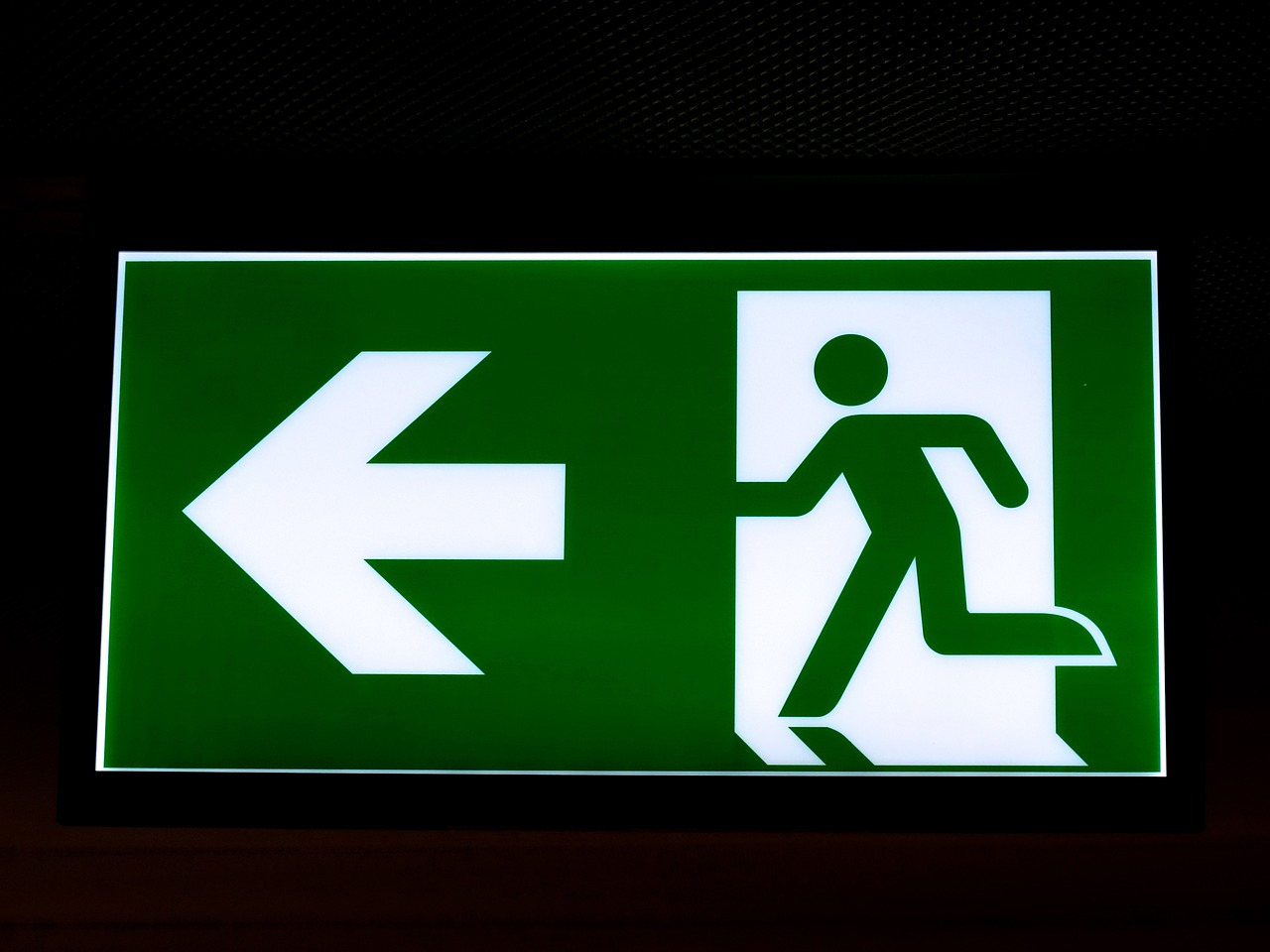
Emergency Preparedness for Families
When it comes to ensuring the safety of your family, being prepared for emergencies is not just a good idea; it's a necessity. Emergencies can strike at any time, whether it’s a natural disaster, a medical emergency, or an unexpected situation at home. Having a solid plan in place can make all the difference. So, how do you go about preparing your family for the unexpected? Let’s dive into some essential strategies that can help you stay a step ahead.
First and foremost, creating an emergency plan is crucial. This plan should outline what your family will do in various scenarios, such as fires, earthquakes, or severe weather. Sit down as a family and discuss the different emergencies that could occur in your area. Make sure everyone knows the escape routes from your home and where to meet outside in case of an evacuation. It's like having a game plan before the big match; you wouldn’t go in unprepared, right?
Another important aspect of emergency preparedness is assembling a comprehensive emergency kit. This kit should include essential items that your family might need during an emergency. Here’s a quick rundown of what to include:
- Water: At least one gallon per person per day for at least three days
- Non-perishable food: Enough for three days
- First aid kit: Band-aids, antiseptics, and any necessary medications
- Flashlight: With extra batteries
- Whistle: To signal for help
- Dust mask: To help filter contaminated air
- Moist towelettes: For personal sanitation
- Multi-tool: Handy for various tasks
- Local maps: In case of evacuation
Once you have your emergency kit ready, it’s essential to regularly check and update it. Just like you wouldn’t let your car run on empty, you need to ensure that your emergency supplies are fresh and ready to go. Set a reminder every six months to go through your kit and replace expired items.
Another key element of emergency preparedness is ensuring that your family knows how to communicate during a crisis. Designate a family contact who lives outside your immediate area. In the chaos of an emergency, it can be easier to reach someone who isn’t in the immediate vicinity. Make sure everyone has this contact’s number saved in their phones and written down in a safe place.
Don’t forget about teaching your kids some basic safety skills! Depending on their age, they can learn how to dial emergency numbers, identify safe adults, and even basic first aid. It’s like giving them a toolbox of skills that they can use whenever they need to. You might even consider enrolling them in a first aid class tailored for children. This not only empowers them but also gives you peace of mind knowing they can handle minor emergencies.
Finally, it’s essential to conduct regular emergency drills with your family. Just like fire drills at school, these practice runs can help everyone feel more comfortable with the plan. Make it fun! Pretend you’re on a mission, and give everyone roles to play. This way, when a real emergency happens, your family will be more prepared to act quickly and calmly.
In summary, emergency preparedness is all about planning, practicing, and being proactive. By taking the time to create a solid emergency plan, assembling a well-stocked kit, and educating your family, you can significantly enhance your family’s safety. Remember, it’s not just about having the right tools; it’s about fostering a mindset of readiness and resilience.
| Question | Answer |
|---|---|
| What should be in an emergency kit? | Your emergency kit should include water, non-perishable food, a flashlight, a first aid kit, and communication devices. |
| How often should I check my emergency kit? | It's advisable to check your emergency kit every six months to ensure all items are up to date and functional. |
| How can I teach my kids about safety? | Engage them in discussions about safety, enroll them in classes, and conduct drills to practice emergency responses. |
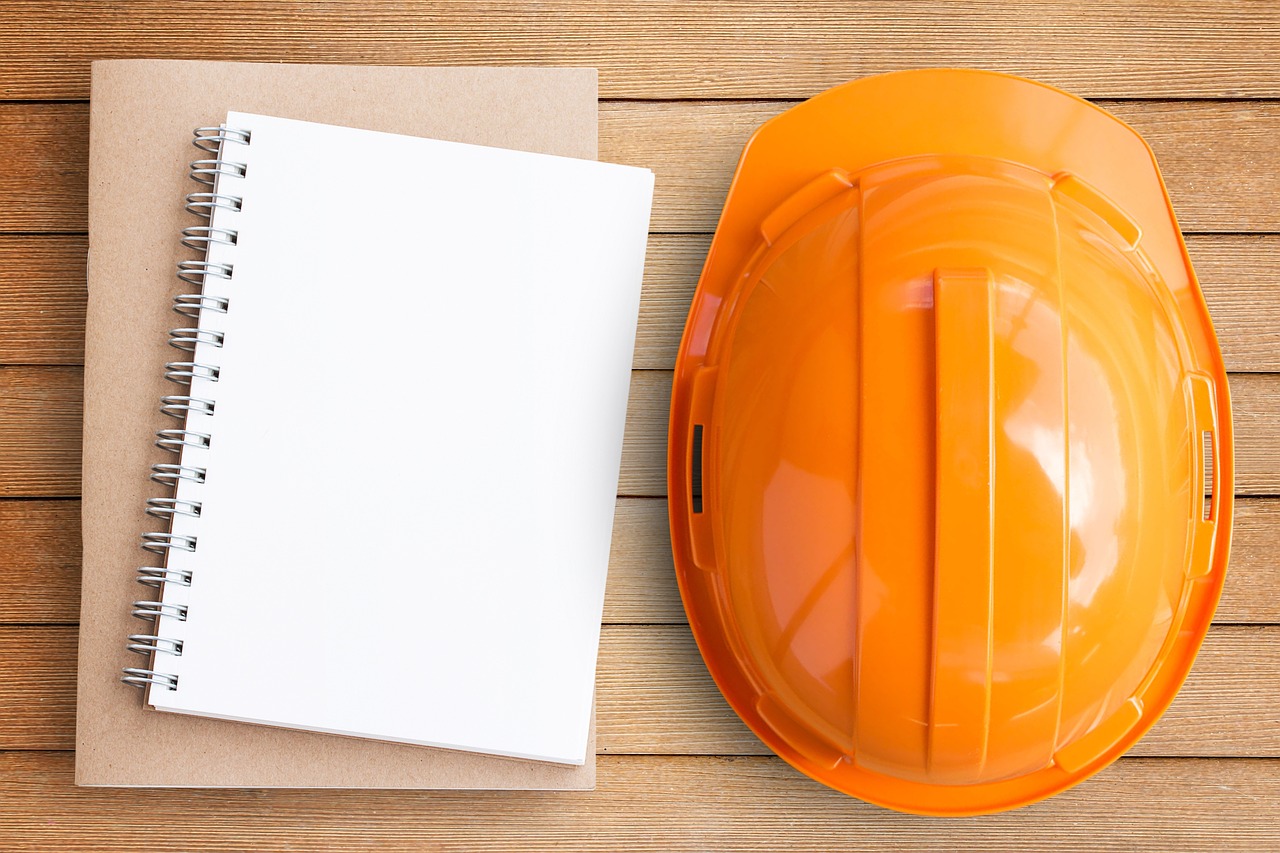
Educating Children About Safety
When it comes to ensuring the safety of our little ones, education is the most powerful tool we have. Teaching children about safety is not just about reciting rules; it’s about instilling a sense of awareness and responsibility. From a young age, kids are naturally curious, which means they’re often unaware of the dangers that lurk in their everyday environments. So, how do we equip them with the knowledge they need to navigate their world safely?
First and foremost, it’s essential to make safety lessons age-appropriate. For toddlers, simple concepts like “hot” and “sharp” can be taught through playful interactions. For instance, you might say, “Ouch! The stove is hot!” while demonstrating with a safe distance. As they grow older, you can introduce more complex ideas, such as understanding traffic signals or recognizing safe vs. unsafe strangers. Using relatable scenarios can help solidify these lessons in their minds.
Interactive learning can also be incredibly effective. Consider organizing fun safety drills at home. For example, you could turn fire drills into a game where everyone practices how to exit the house safely and quickly. This not only reinforces the importance of being prepared but also makes the learning process enjoyable. Kids are more likely to remember lessons that are fun and engaging!
Additionally, using visual aids can enhance understanding. Charts, diagrams, or even simple drawings can illustrate safety rules. For instance, a colorful chart showing the steps to take in case of an emergency can serve as a constant reminder. You could even create a small booklet together, where your child can draw pictures of safe and unsafe behaviors. This hands-on approach not only fosters creativity but also cements the safety messages in their minds.
Another effective method is to lead by example. Children learn a lot by observing their parents and caregivers. If you consistently practice safety measures—like wearing seatbelts, using pedestrian crossings, and not engaging with strangers—your child will likely mimic these behaviors. It’s all about creating a safe culture at home where safety is a shared responsibility.
Finally, don’t underestimate the power of open communication. Encourage your children to ask questions about safety and share their thoughts. This dialogue not only helps clarify any misconceptions but also empowers them to express their concerns. Make it a habit to discuss safety regularly, even in casual conversations. For example, you could talk about safety while watching a movie or during a family outing. This way, safety becomes a natural part of their everyday life.
In conclusion, educating children about safety is a continuous journey that requires creativity, patience, and consistency. By using engaging methods and fostering an open environment, you can help your children develop a strong sense of safety awareness that will serve them well throughout their lives.
- What age should I start teaching my child about safety? It's best to start as early as possible. Even toddlers can understand basic concepts like "hot" and "sharp."
- How can I make safety lessons fun? Use games, interactive drills, and visual aids to make learning about safety engaging for children.
- Should I talk about safety only during emergencies? No, safety should be a regular topic of conversation to keep it fresh in their minds.
- How can I reinforce safety lessons outside the home? Encourage your child to practice safety rules in different environments, like at school or during playdates.
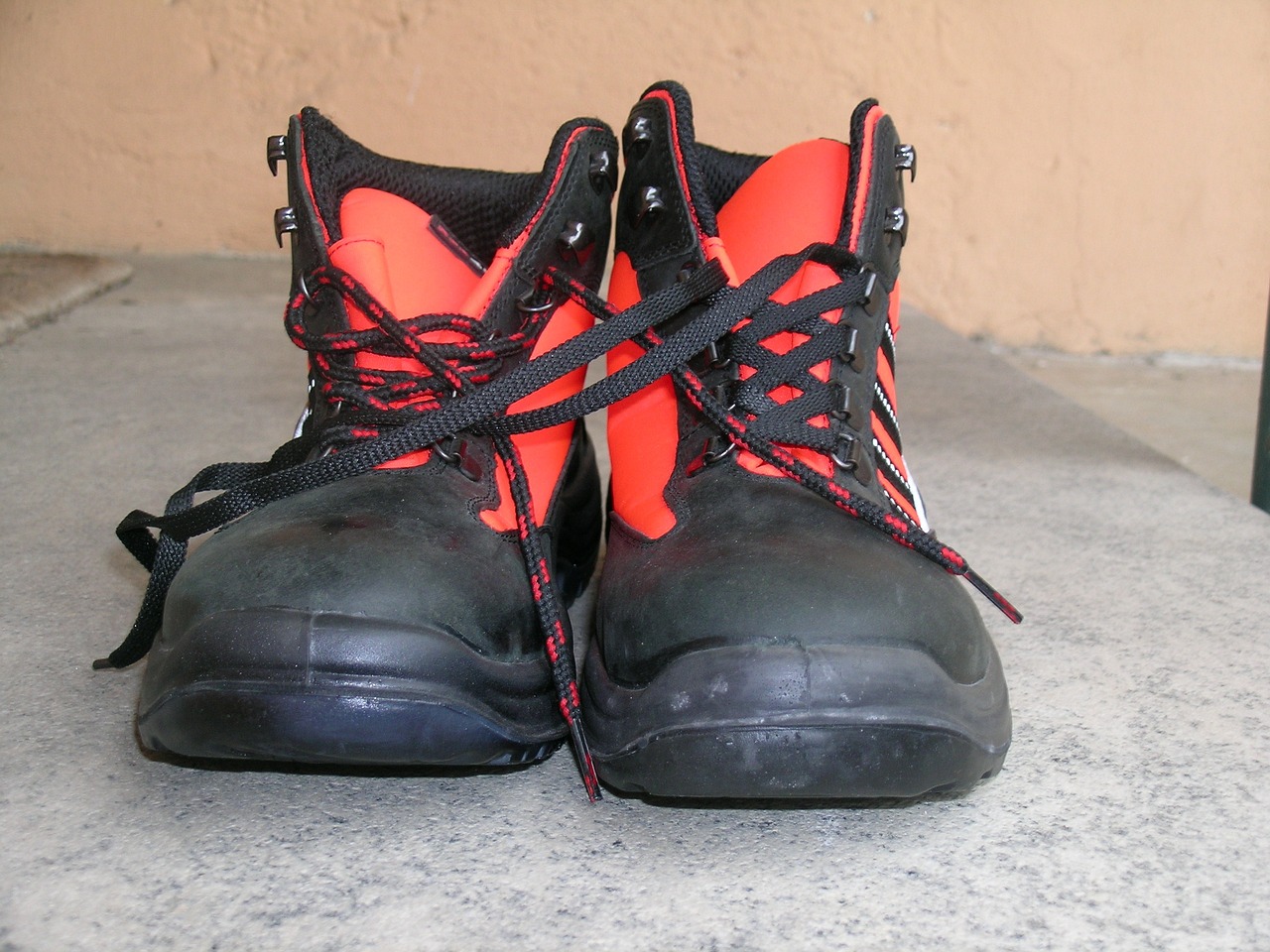
Safety Measures for Outdoor Spaces
When it comes to keeping our little ones safe, outdoor spaces can often present unique challenges that require our vigilant attention. While the great outdoors offers fresh air and endless opportunities for play and exploration, it also poses risks that we must proactively address. Just think about it—your child is out there running around, discovering the world, but lurking in the background are potential hazards like sharp garden tools, unfenced pools, or even the unpredictable nature of the weather. So, how do we create a safe haven outside? Here are some essential strategies to consider.
First and foremost, **fencing** is your best friend. A sturdy fence not only keeps children contained but also prevents them from wandering into streets or other hazardous areas. Ensure that the fence is tall enough and that the gates are securely latched. It's not just about keeping kids in; it’s also about keeping potential dangers out. For instance, if you live near a busy road or have neighbors with pets that may not be child-friendly, a solid barrier can provide peace of mind.
Next up, let’s talk about **play equipment**. If you have swings, slides, or climbing frames in your yard, it’s crucial to regularly inspect them for any signs of wear and tear. A rusty swing or a loose slide can quickly turn a fun day into an accident waiting to happen. Additionally, make sure that all play structures are installed on soft surfaces—think mulch, grass, or rubber mats—to cushion any falls. After all, kids are bound to take a tumble every now and then, and we want to minimize those bumps and bruises!
Another area to focus on is the **landscape** itself. While a beautiful garden can be a source of pride, it can also be a hidden danger zone. Be mindful of any **toxic plants** that may be lurking in your garden. Some common plants, like oleander or foxglove, can be harmful if ingested. It’s a good idea to research and remove any potentially dangerous flora from your yard. Furthermore, keep tools and gardening supplies out of reach; a curious child might see a spade as a toy rather than a tool that can cause injury.
Weather can also play a significant role in outdoor safety. It’s essential to keep an eye on the forecast and understand how different conditions can affect your child’s playtime. For example, during hot summer days, ensure that your kids stay hydrated and take breaks in the shade to avoid heat exhaustion. Conversely, during rainy seasons, be cautious of slippery surfaces and potential flooding. Always be prepared to adjust outdoor play plans based on the weather conditions.
Lastly, supervision is key. Even with all the precautions in place, nothing beats the watchful eye of a parent or guardian. While it’s great to encourage independence, young children still need guidance and monitoring, especially in outdoor settings. Make it a habit to check in frequently and be present during playtime. You never know when a small accident might occur, and being nearby can make all the difference.
In summary, ensuring outdoor safety for your children is a multifaceted approach that involves setting up physical barriers, maintaining play equipment, managing the landscape, being weather-aware, and providing constant supervision. By taking these steps, you can create a secure outdoor environment that allows your children to explore and enjoy the wonders of nature without unnecessary risks.
- What are the best types of fences for child safety?
Wood or vinyl fences that are at least four feet high and have secure latches are ideal for keeping children safe. Make sure there are no gaps that a child could squeeze through.
- How can I make my play equipment safer?
Regularly inspect all play equipment for any damage, and ensure it's installed on a soft surface like mulch or rubber mats to cushion falls.
- What should I do about poisonous plants in my yard?
Identify and remove any toxic plants from your garden. Consider replacing them with child-friendly plants that are safe for children to be around.
- How can I ensure my child is safe during outdoor play?
Supervision is crucial. Always keep an eye on your children while they play outside, and teach them about safety rules as well.
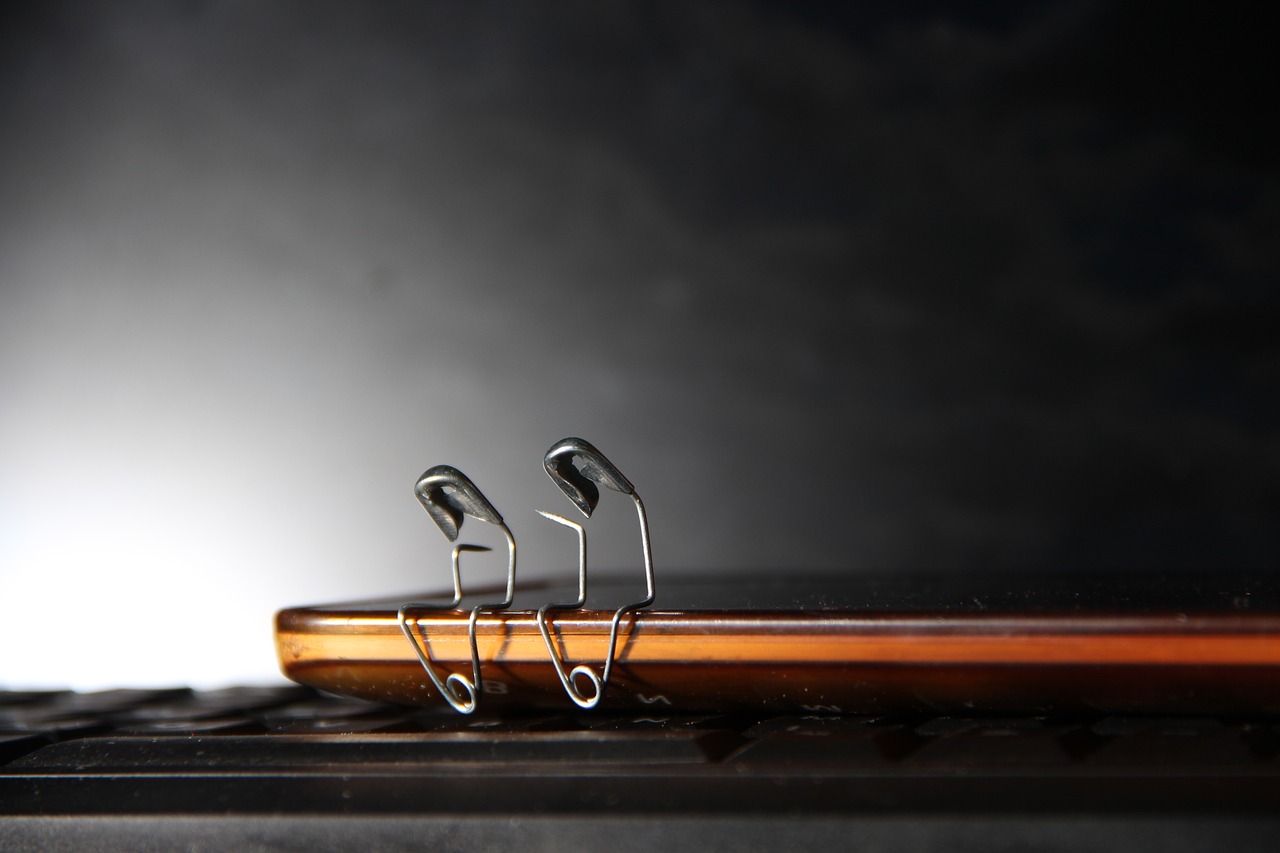
Technology and Home Safety
In today's fast-paced world, technology plays a pivotal role in enhancing the safety of our homes, especially for families with children. Imagine having a personal assistant that never sleeps, always keeping an eye on your little ones while you go about your day. This is the promise of modern home safety technology. From smart security systems to innovative monitoring devices, the options are almost endless. But how do you choose the right technology to ensure your child's safety? Let's dive into some exciting advancements that can help keep your home secure.
First off, consider the integration of smart security systems. These systems offer a range of features, such as motion detection, video surveillance, and real-time alerts. You can monitor your home from your smartphone, giving you peace of mind when you’re away. For instance, if your child sneaks out to play in the yard, a motion sensor can notify you immediately, allowing you to intervene if necessary. Think of it as having a digital watchdog that never tires!
Next up, we have smart locks. These innovative devices allow you to lock or unlock doors remotely, providing an added layer of security. You can grant temporary access to babysitters or family members without having to hand over a physical key. This means no more worrying about lost keys or forgotten locks. Instead, you can control access right from your smartphone, ensuring that only trusted individuals can enter your home.
Furthermore, consider investing in baby monitors that come equipped with advanced features like video streaming and two-way audio. These devices allow you to keep an eye on your child while they sleep or play in another room. With some models, you can even receive alerts when your child cries or moves around, giving you the ability to respond instantly. Imagine being in the kitchen, cooking dinner, and still being able to hear your child giggling or fussing in their room!
Another exciting area is the use of smart home apps. These applications can centralize control of all your home safety devices, making it easier to manage everything from one place. You can set up routines that automatically lock doors at night, turn on lights when someone approaches, or even send alerts if unusual activity is detected. This level of automation not only enhances safety but also simplifies your daily life.
While technology can significantly improve home safety, it’s essential to remember that it should complement, not replace, traditional safety measures. Regularly checking smoke detectors, keeping hazardous materials out of reach, and teaching your children about safety are still crucial steps. Think of technology as the cherry on top of your home safety sundae—delicious, but not the main ingredient!
In summary, leveraging technology in your home can create a safer environment for your children. With smart security systems, locks, monitors, and apps, you can keep a watchful eye on your little ones while enjoying the convenience of modern living. So, why not embrace these innovations? They could be the key to unlocking a safer home for your family.
- What are the best smart security systems for families? There are many options available, but popular choices include Ring, Arlo, and Nest. Each offers unique features, so consider your specific needs when choosing.
- How can I ensure my child understands technology safety? Teach them about the importance of privacy and not sharing personal information online. Encourage them to ask questions if they feel unsure about something.
- Are smart locks safe for families? Yes, when properly installed and maintained, smart locks can be very secure. Always choose reputable brands and keep your software updated.

Regular Safety Audits
When it comes to keeping your home safe for your little ones, one of the best practices you can adopt is conducting . Think of it as a routine check-up for your home’s safety. Just like you’d take your child to the doctor for a health check, your home deserves the same attention to ensure it remains a secure environment. These audits can help you identify new hazards that may have emerged since your last check, especially as your children grow and become more adventurous.
During these audits, it's essential to walk through your home systematically, room by room, and pay close attention to potential risks. Start in the living room, where sharp corners of furniture can be a concern, and then move to the kitchen, where hazardous items like knives and cleaning supplies are often within reach of curious hands. Don't forget to check the bathrooms for medications and other dangerous substances that should be out of reach. Here’s a quick checklist to help guide your audit:
- Look for sharp objects and secure them out of reach.
- Ensure all cleaning supplies and medications are locked away.
- Check for loose rugs or cords that could cause tripping.
- Test smoke and carbon monoxide detectors to ensure they are functioning.
- Inspect outdoor areas for any potential hazards like tools or chemicals.
After completing your audit, it’s crucial to make a plan for any necessary changes. Perhaps you need to install safety locks on cabinets or move furniture around to create a safer play area. Documenting your findings can also be beneficial; jot down any hazards you found and the steps you plan to take to address them. This way, you can keep track of what needs to be done and when, making your home safer over time.
Moreover, consider involving your children in the process as they grow older. Teaching them to recognize potential dangers not only empowers them but also reinforces their understanding of safety. You can turn it into a fun game where they help identify areas that need attention. It’s a fantastic way to instill safety awareness in them while also making it a family activity.
In addition to physical checks, remember that safety is also about being prepared for emergencies. As part of your safety audit, ensure that your emergency plan is up to date. Review your first aid kit, check expiration dates on supplies, and make sure your family knows what to do in case of an emergency. This proactive approach not only keeps your home safe but also gives you peace of mind knowing you’re prepared for whatever might come your way.
In summary, regular safety audits are an essential part of maintaining a secure home for your children. By systematically checking for hazards, documenting your findings, and involving your kids in the process, you can create a safer environment that evolves with your family’s needs. So, grab a pen and paper, and start your first audit today—your children’s safety is worth every effort!
Q: How often should I conduct a safety audit?
A: It's recommended to conduct a safety audit at least twice a year, or more frequently if your children are very young or if you've made changes to your home.
Q: What should I do if I find a hazard during my audit?
A: Address the hazard immediately if possible. This may involve moving dangerous items out of reach, installing safety devices, or making structural changes to your home.
Q: Can I involve my children in the safety audit?
A: Absolutely! Involving your children can help them learn about safety and develop awareness of potential hazards in their environment.
Frequently Asked Questions
- What are the most common household hazards for children?
Common household hazards include sharp objects like knives and scissors, choking hazards such as small toys or food items, and toxic substances like cleaning supplies and medications. Being aware of these risks is the first step in ensuring a safe environment for your little ones.
- How can I effectively childproof my home?
Childproofing involves several strategies, such as securing heavy furniture to the wall, using safety gates to block off stairs, and installing locks on cabinets containing hazardous items. It's all about creating barriers and reducing access to potentially dangerous areas.
- What are safe storage solutions for cleaning supplies?
Store cleaning supplies and medications in high cabinets that are out of reach of children. Use childproof latches to secure these cabinets, and consider using clear bins to keep items organized and visible, making it easier for adults to find what they need without leaving dangerous items accessible.
- How can I create safe play areas in my home?
Designate specific areas for play that are free from hazards. Use soft mats or carpets, remove sharp furniture edges, and ensure that toys are age-appropriate. Always supervise your children during playtime to quickly address any potential dangers.
- What should I include in an emergency preparedness plan for my family?
Your emergency plan should include a designated meeting spot, a list of emergency contacts, and a well-stocked first aid kit. Regularly review this plan with your family so that everyone knows what to do in case of an emergency.
- How can I teach my children about safety?
Start by discussing safety in simple terms that they can understand. Use role-playing scenarios to practice what to do in various situations, like crossing the street or dealing with strangers. Reinforce these lessons regularly to help them develop good habits.
- What safety measures should I take for outdoor play?
Secure your yard with fences and gates to keep children safe. Always supervise outdoor play, especially near water or busy streets. Teach your children about safe boundaries and the importance of staying within sight.
- How can technology enhance home safety?
Smart home devices like security cameras, motion detectors, and smart locks can significantly improve safety. These tools help you monitor your home and ensure that your children are safe while you’re away or busy.
- Why are regular safety audits important?
Regular safety audits help you identify new hazards that may have emerged as your child grows and explores. By conducting periodic checks, you can address any safety concerns before they become a problem, ensuring a consistently safe environment.


